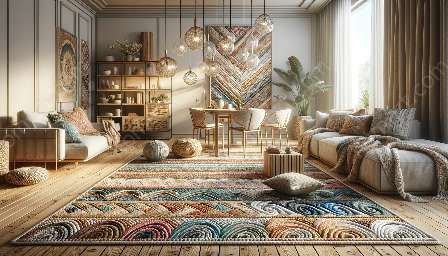Rug manufacturing techniques encompass a rich tapestry of traditional processes that have evolved over centuries, contributing to the timeless appeal of home furnishings. From hand-weaving to tufting to knotting, each method reflects the cultural and artisanal heritage of rug-making. By exploring these intricate techniques, we gain a deeper appreciation for the craftsmanship and artistry that goes into creating these exquisite pieces.
Hand-Weaving: A Time-Honored Craft
One of the most revered and ancient rug manufacturing techniques is hand-weaving. This method involves the labor-intensive process of interlacing warp and weft threads on a loom, creating intricate patterns and designs. Hand-weaving results in heirloom-quality rugs that exude a sense of history and artistry.
Knotting: The Art of Precision
Rug knotting is another traditional technique that requires exceptional skill and precision. Artisans meticulously tie individual knots by hand to form the pile of the rug, resulting in varying textures and pile heights. This meticulous process is characteristic of hand-knotted rugs, which are renowned for their durability and artisanal appeal.
Tufting: Precision and Versatility
Tufting is a more contemporary rug manufacturing technique that offers both precision and versatility. This method involves threading yarn through a backing material to create a pile. Tufted rugs can range from high-pile to low-pile, offering a wide array of textures and styles that complement modern home furnishings.
Materials and Dyes: Enhancing the Beauty of Rugs
In addition to the manufacturing techniques, the choice of materials and dyes plays a crucial role in the beauty and longevity of rugs. Natural fibers such as wool, silk, and cotton are prized for their resilience and luxurious textures, while synthetic materials offer durability and easy maintenance. Furthermore, natural and synthetic dyes are carefully selected to imbue rugs with rich, vibrant colors that enhance their appeal in home furnishings.
Integration with Home Furnishings
Rugs, being an essential part of home furnishings, integrate seamlessly with a variety of interior design styles. From traditional to modern and eclectic, the diverse manufacturing techniques and materials allow for the creation of rugs that complement and elevate the aesthetic of any living space. Whether it's a hand-woven heirloom rug in a classic interior or a vibrant tufted rug in a contemporary setting, these manufacturing techniques contribute to the beauty and functionality of home furnishings.
































